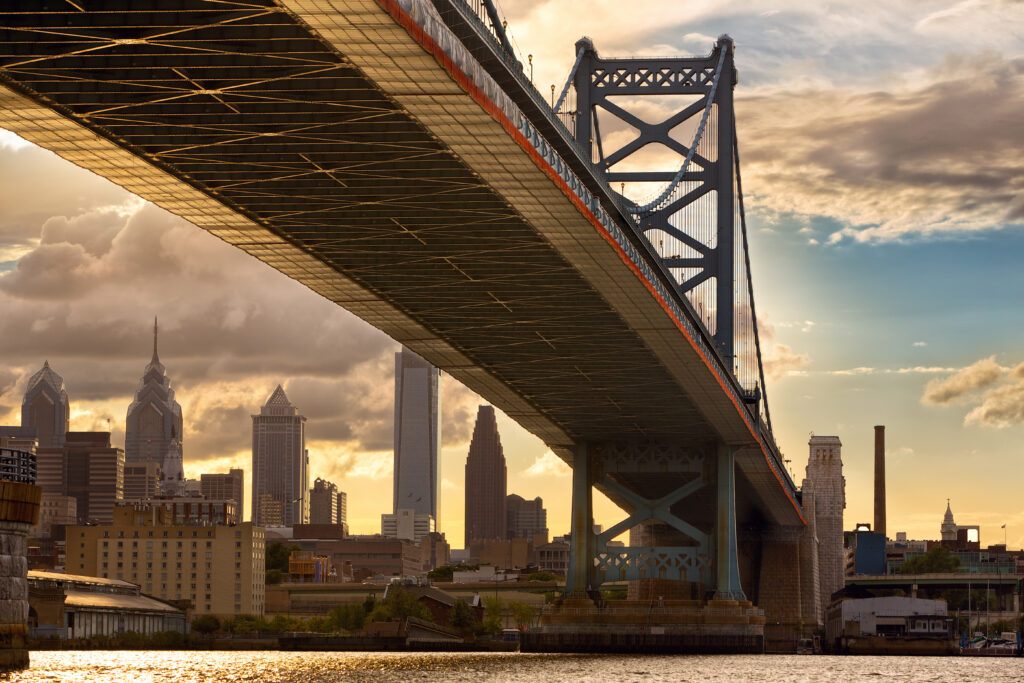
How did an out-of-work actor in Los Angeles and his two friends create a successful television series for less than $100?
The story begins in 2004, when Philadelphia-born Rob McElhenney, a working actor with a handful of credits (including a Law & Order guest spot and roles as “Teenager on Property” in A Civil Action and “Student” in Wonder Boys), dreamed up an idea for a short film. According to McElhenney, “It was just an idea of a guy going over to another guy’s house to ask him for sugar, and the other guy telling him that he has cancer. And instead of the friend being compassionate, he just wants to get the sugar and get out the door.”
Rob shared the material with two friends, Charlie Day and Glenn Howerton, and then-girlfriend Jordan Reid. The idea evolved from a video short to a pilot called It’s Always Sunny on TV and focused on struggling actors in Hollywood going on different auditions and trying to get work.
The pilot was never intended to land a show—it was just put together for the fun of it on weekends using two video cameras (hence the $85 budget for blank tapes) and shot at either Reid or Howerton’s apartment. The first version, which according to Day was “NOT GOOD,” starred David Hornsby as Mac, who became a recurring guest star on the series as Cricket.
The second version of the pilot had Howerton, Day, and Reid reprising their roles as well as McElhenney playing Mac, Mary Elizabeth Ellis as the Waitress (she would go on to marry Day and portray the character on the series), and future Firefly/Homeland star Morena Baccarin as Carmen.
After the pilot was finished, McElhenney and his manager and agent took meetings at a number of networks including FOX, HBO, Comedy Central, VH1, MTV, CBS, and FX. According to McElhenney, the pitch involved “just going around and popping in the DVD and seeing if people laughed. I think we hit seven or eight networks in two days, and we ultimately got offers from four. When we took it to Fox, they did not get it. It was the only room that did not laugh once. I was just looking over at the executive who had a stone face through the entire thing. When it was over, he stood up and said, ‘OK, thanks.’ That was the end of it.”
A meeting with television veteran and general manager of FX John Landgraf changed everything. Landgraf’s focus was specific: producing compelling shows at a reasonable price. As a favor to McElhenny’s managers, Landgraf took a meeting with him and was immediately struck by the humor in the 26-minute episode and wanted to reshoot the pilot, now with a $400,000 budget, a professional crew, and a few conditions.
The setting of the series had to be moved from Los Angeles to set it apart from a number of series already set there. McElhenny relocated the show to his hometown of Philadelphia and the characters changed from aspiring actors to co-owners of a dive bar: Paddy’s Pub. FX also took a chance on Day and Howerton, making the inexperienced trio executive producers.
The female lead was recast (Reid and McElhenny had broken up by that point), and actress Kaitlin Olson, who had previously appeared in a dozen episodes of The Drew Carey Show, auditioned for the character of Sweet Dee. According to Olson, “It was like my 300th pilot season, and I was so frustrated with the stuff that I was reading. I didn’t find things very funny, and then I wouldn’t even get them. This was for absolutely no money on a basic cable network I’d barely heard of, and I didn’t even care. I just wanted it so badly.”
With low expectations, Landgraf took a chance and ordered a first season which was budgeted at $450,000 an episode, less than a third of a network standard. The series was shot in 24p standard-definition video, using Panasonic’s DVX100 MiniDV prosumer video camera. He also gave them a wide berth creatively, and although it earned low ratings with just over a million people watching the premiere, critically the series was well received.
In order to cut budgetary corners in the first season, often three episodes were filmed simultaneously and much of the music featured was in the public domain including the show’s theme, “Temptation Sensation” by Heinz Kiessling.
According to Charlie Day, the show’s opening credits sequence is the cheapest credits ever, filmed with a digital camera while driving around Philadelphia one night capturing landmarks including the Benjamin Franklin Bridge, Penn’s Landing, Lincoln Financial Field, Swann Memorial Fountain, Boathouse Row, 30th Street Station, and South Street.
Even the original pilot’s plot was recycled, becoming the fourth episode, “Charlie Has Cancer.”
Now, almost a decade later, It’s Always Sunny in Philadelphia became the cornerstone comedy hit for the FX network and became the first sitcom to ever get a cable-to-cable syndication deal (with reruns airing on Comedy Central) and is the cheapest greenlit sitcom pilot ever in the history of television.
Howerton sums up the experience with some sage wisdom: “People are always asking us how to get their foot in the door, and we always encourage people to go out and shoot anything they can.”
The first season DVD provided the team’s recollections on the experience.